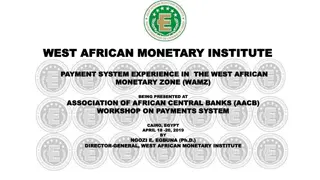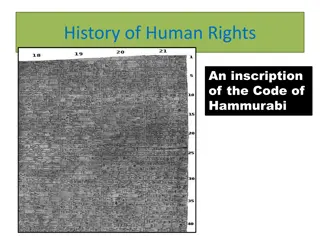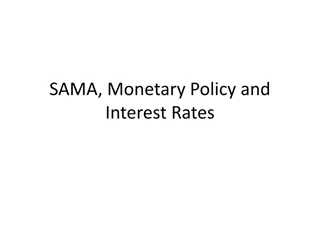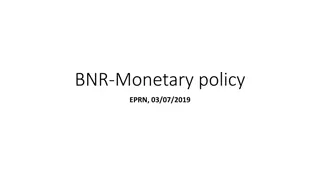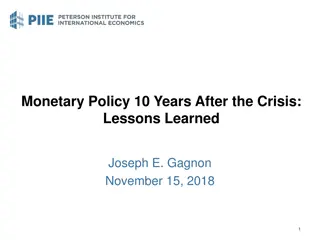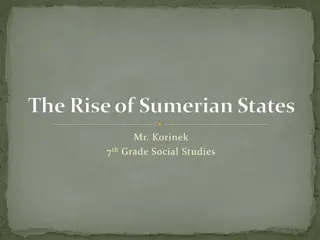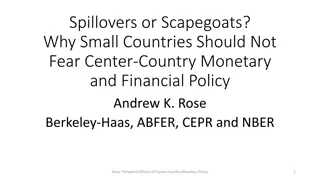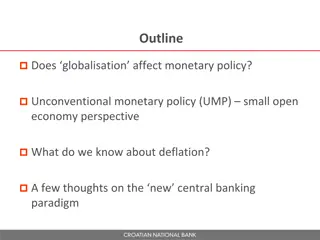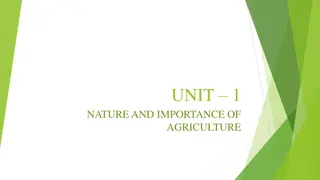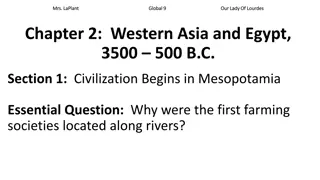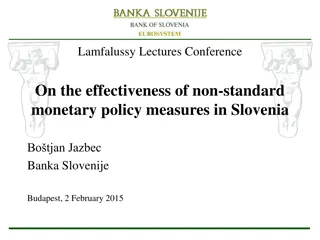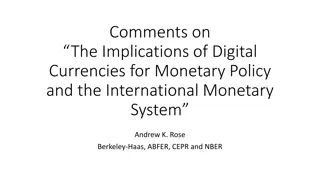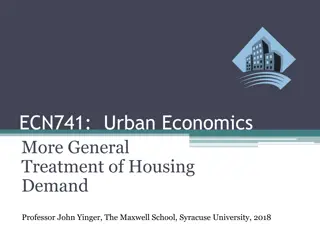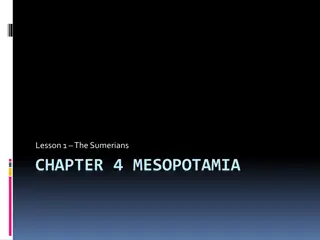Evolution of Monetary Functions: From Ancient Mesopotamia to Modern Economics
Delve into the origins and development of monetary functions throughout history, from the use of silver shekels in Mesopotamia to the complexities of modern currency systems. Explore the evolution of money's roles as a unit of accounting, medium of exchange, store of value, and more, shedding light on the intricate interplay between tangible and intangible forms of value.
Download Presentation

Please find below an Image/Link to download the presentation.
The content on the website is provided AS IS for your information and personal use only. It may not be sold, licensed, or shared on other websites without obtaining consent from the author.If you encounter any issues during the download, it is possible that the publisher has removed the file from their server.
You are allowed to download the files provided on this website for personal or commercial use, subject to the condition that they are used lawfully. All files are the property of their respective owners.
The content on the website is provided AS IS for your information and personal use only. It may not be sold, licensed, or shared on other websites without obtaining consent from the author.
E N D
Presentation Transcript
14-15 November 2016 What is money? What is currency? Workshop at Financial University Government of the Russian Federation Disaggregation: Six Monetary Functions over Five Millennia Dennis O. Flynn Pacific World History Institute & University of the Pacific
Six Monetary Functions in History Intangible Unit of Accounting Function: Shekel (8.33g) in Mesopotamia, 3000 BCE Intangible Link Money Function: Ideal didrachm coin (8.6g) in 6th Century BCE; Dutch guilder/stiver/Rixdollar (25.7 g) in 1570s-1681 CE Tangible Monetary Standard Function (e.g. silver) Tangible Medium of Exchange Function* Tangible Store of Value Function* Intangible Measure of Relative Values Function
Intangible Shekel, Silver Standard, & Intangible Didrachm 3000 BCE Shekel represented 8.33 grams fine silver (some 2400 years prior to the first known coins) Mesopotamia was thus on a Silver Standard in the sense that market values of all items were measured relative to a fixed quantity of silver. In the sixth century BCE, an ideal (thus intangible) didrachm coin (8.6g) became linked to the shekel because of similar weight. Actual didrachm coins weighed less than 8.6g, and were therefore valued at less than one intangible shekel/didrachm.
Medium of Exchange and Store of Value Monetary Functions Both Medium of Exchange and Store of Value Functions require tangibility; these functions are the same as depicted in conventional monetary theory. (Conventional monetary theory contains a contradiction: It insists that these two tangible functions and intangible Unit of Accounting function must be satisfied simultaneously.)
All Units of Accounting are by Nature Intangible Monetary Functions United States dollars (USD) that appear on balance sheets today are abstract/intangible. These USD represent estimates of quantities of tangible USD that perhaps could be obtained if items listed were sold at some future date. One need look no further than recent bank runs to realize that monies listed on balance sheets are not the same as currency on hand.
Measure of Relative Values Monetary Function Weights and measurements in the physical sciences are intangible abstractions (gram, meter, etc.), since their purpose is to permit comparison of weights and lengths of tangible items. Ironically, an intangible measure-of-relative- values dollar already exists in Microeconomic Theory, in contradiction to the three-function definition in macroeconomics. The Price Theory of Monies adopts the intangible ratio-Microeconomic-dollar, relabeling it ir$.
Six Supply/Demand Functions under Laws of Supplies and Demands Laws of Supplies and Demands apply to all goods and services. Three supply functions for goods are: production supply, inventory supply, and sales supply. Three demand functions for goods are: consumption demand, inventory demand, and purchase demand. Inventory Demand determines Inventory Supply in steady state. All goods are viewed as wealth components. Inventories of services cannot exist, whereupon the model reduces to one supply and one demand function (i.e. Laws of Supply and Demand) Intangibles only!
Monies as Regular Goods Every tangible money can be analyzed via Laws of Supplies and Demands, since price of everything is expressed in terms of the Measure of Relative Values (ir$). This permits development of production theories, distribution theories, and end-market theories for tangible monies to be analyzed via the same apparatus as applied to non-monetary goods. Economics should become a physical science, wherein accumulation/wealth and therefore history takes center stage.



